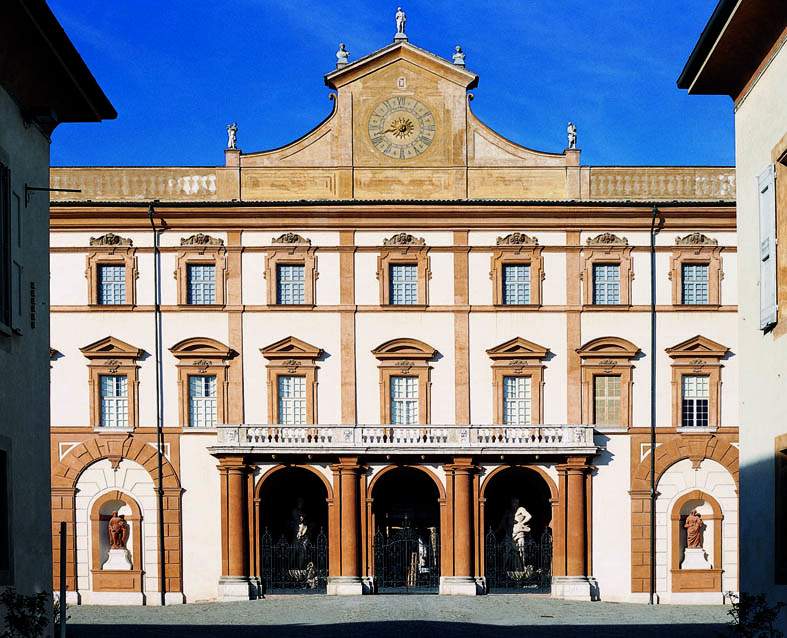As of October 6, 2023, the Ducal Palace in Sassuolo will present itself to the public with a new layout: some spaces of the palace have been completely transformed to host the permanent exhibition Invitation to the Court.
Five rooms in the southern wing of the palace, known asOrlando’s Apartment and until now only rarely open to the public, have in fact been set aside to illustrate and reconstruct with large models, reconstructive drawings, artworks, films and large images, the transformations of the prestigious residence of the Este family and the surrounding area: from a small but strategic fortified place, located on the eastern bank of the Secchia River, to a prestigious residence rich in furnishings, fountains, sculptures and paintings that from the 18th century became a destination for visits by the Grand Tour.
In recent years, many scholars have devoted special attention to the locations of courts and the development of royal palaces. However, the history of the Estense court after the forced abandonment of Ferrara in 1598 continues to be little studied. The relocation of the duchy to the downsized territory of Modena and Reggio resulted in the establishment of a crown of extra-urban residences, the birth of new construction sites, important commissions and transformations that had a happy outcome especially in Sassuolo.
This development has its foundations precisely in the period when one of the most sumptuous royal palaces in northern Italy was built. In fact, we owe to the studies of recent years and to the more recent in-depth studies desired and promoted by Gallerie Estensi of Modena, of which the Palace of Sassuolo is a part, completely different points of view thanks to which we can place Sassuolo in a European process that began in the middle of the seventeenth century, the century of the scientific revolution, and matured in the following century thanks to the contributions that also came from the French court.
It was 1634 when Francesco I d’Este, duke of Modena and Reggio, commissioned the Roman architect Bartolomeo Avanzini and the Reggio engineer Gaspare Vigarani, famous for his theatrical machines, to transform the castle palace of Sassuolo, formerly belonging to the princes Pio di Savoia, into a spectacular stately home. The works and sumptuous interior decorations would aim to emphasize the virtues of the duke and the Este dynasty. Along with the palace, a large park that takes advantage of the special environmental connotations of the site also gradually takes shape. A vast park that at its peak will reach over 10 kilometers in length: from the hill to the plain.
The new layout thus aims to rebuild these transformations by connecting its history with the surrounding area.
 |
| Palazzo Ducale in Sassuolo: a new exhibit reconstructs the transformations of the residence of the Este family |
Warning: the translation into English of the original Italian article was created using automatic tools. We undertake to review all articles, but we do not guarantee the total absence of inaccuracies in the translation due to the program. You can find the original by clicking on the ITA button. If you find any mistake,please contact us.